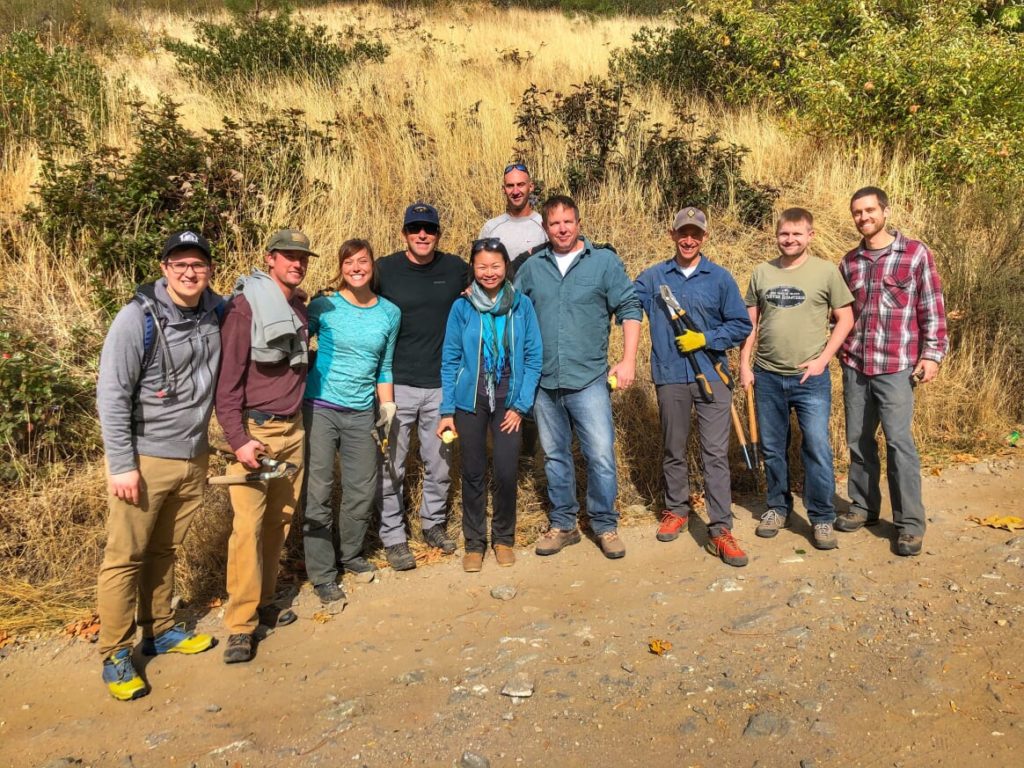Restoring Wenatchee and Entiat River ecosystems by reintroducing beavers
Over the last several decades, human activity in the Wenatchee and Entiat River watersheds has impacted the ecosystems of local streams so significantly that several native salmon species are at the brink of extinction. As part of a broader water stewardship effort, the Trout Unlimited—Washington Water Project has targeted the reintroduction of beavers to the area. Beavers play a critical role in the health of the ecosystem; their dams reshape the streams to make them more hospitable to insect populations and salmon. The ponds that form behind beaver dams provide cool-water refuge for wildlife, encourage the growth of vegetation, and even replenish groundwater levels.
Relocating beavers and their habitats to improve water flow
To lead the restoration of the Wenatchee and Entiat River basin, the Washington Water Project turned to the river construction experts—beavers. Trout Unlimited reintroduced 25 beavers to 14 locations in the Wenatchee River drainage and one location in the Yakima River drainage. In addition, they implemented 51 beaver dam analogs (BDAs) in tributary systems of the river sub-basins. A group of Microsoft employees worked alongside Trout Unlimited to build four BDAs in Derby Creek just outside the town of Peshastin in central Washington.
BDAs are lined-up pilings driven into the streambed and interwoven with branches to mimic a beaver dam. The branches capture debris and sediment to create ponded water behind the blockade. These pools encourage the growth of native shrubs, creating a more attractive habitat for beavers. The beavers can then continue the stream restoration process by building their own dams. Cody Gillin, Trout Unlimited beaver project manager, explains, “The idea behind this is that these structures are going to encourage beavers to colonize this area where they have tried and not been successful over the past couple of decades.” Of the 15 release sites, three now feature beaver-established structures alongside the BDAs.
Protecting and restoring stream environments
Beaver dams are critical to the health of the river ecosystem, explains Robes Parrish, U.S. Fish and Wildlife Service hydrologist. The dams create pools that flatten rivers and streams and help waterways meander. They increase the amount of water that soaks into the ground and is stored as groundwater, increasing the supply of cold, clear water during the dry season. Dams address a range of water quality and availability issues: groundwater storage and instream flow, native shrub restoration, floodplain reactivation, habitat complexity, and wood recruitment.
The Trout Unlimited—Washington Water project builds off research that shows increased steelhead populations and enhanced salmon habitat and stream conditions resulting from beaver and BDA activity. Trout Unlimited has seen juvenile steelhead and rainbow trout using these pools where they were previously unable to remain during summer low flows. BDAs benefit endangered species by providing a refuge to fish and creating a food source from the aquatic insects that tend to thrive in beaver ponds. The project will also include education of landowners about management techniques for human-beaver compatibility to reduce human-beaver conflict.
Of benefit to the entire ecosystem is the increase in water availability due to beaver dams. A 2021 evaluation of the Trout Unlimited—Washington Water project found that each BDA creates an average ponded area of 133.75 m2 (about half the area of a tennis court). These ponds were observed to retain water year-round, even during the driest months. Taking into account the number of BDA sites, the average ponded surface area per site, the infiltration rate, and the number of days of infiltration, scientists are able to calculate the total volume of groundwater recharge. The 51 BDAs alone recharge an estimated 86,046 m3 of water per year into the Entiat and Wenatchee watersheds.
Pooling resources to promote healthy habitats and waterways
The Trout Unlimited – Washington Water Project is one of three water stewardship projects in central Washington. The project is part of a partnership with the Bonneville Environmental Foundation (BEF). Other partners include the US Forest Service, the US Fish and Wildlife Service, the Yakama Nation, and Trout Unlimited, which is the project manager. Trout Unlimited beaver project manager Cody Gillin reflects on the impact of the partnership: “Through partnerships with Microsoft, Washington Department of Fish and Wildlife, Cascade-Columbia Fisheries Enhancement Group, and the private landowner, Trout Unlimited has been able to increase habitat availability for threatened fish in a creek that had long been written off by the restoration community.”
Microsoft is helping fund the project as part of its efforts to meet its water replenishment commitments, says Paul Fleming, Microsoft corporate water program manager. Microsoft recognizes that water quality and availability is a key environmental issue and is investing in preserving water for current and future generations. “Water is this sort of connector; it flows through communities and economies,” Fleming comments. “So we are continually asking, ‘how can we address and improve conditions outside of our four walls?’”

“Through partnerships with Microsoft, Washington Department of Fish and Wildlife, Cascade-Columbia Fisheries Enhancement Group, and the private landowner, Trout Unlimited has been able to increase habitat availability for threatened fish in a creek that had long been written off by the restoration community.”—Cody Gillin, Trout Unlimited beaver project manager

